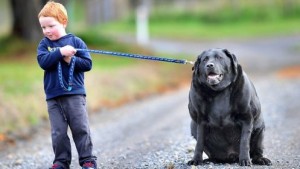Posts Tagged ‘pet obesity’
Pet Obesity Awareness: Tips For Keeping Your Pet Slim & Trim
 Do you know what 88.4 million dogs and cats have in common? They are obese. In a recent study, it was found that 53 percent of adult dogs and 55 percent of adult cats in the United States were classified as being overweight or obese by their veterinarians. Many of these pets were not characterized by their owners as being obese. So in simple terms, fat pets are the new normal in pet ownership.
Do you know what 88.4 million dogs and cats have in common? They are obese. In a recent study, it was found that 53 percent of adult dogs and 55 percent of adult cats in the United States were classified as being overweight or obese by their veterinarians. Many of these pets were not characterized by their owners as being obese. So in simple terms, fat pets are the new normal in pet ownership.
Even though they may be cute, being overweight may be detrimental to your pets health. These extra pounds can put the pets at risk to other disorders such as painful arthritis, heart disease, breathing difficulty, diabetes and even bladder cancer. Obesity not only affects your pets health but also their quality of life.
Certain pets are more likely to be obese. These factors include but are not limited to:
- Breed—Certain breeds such as the Labrador Retriever, Cocker Spaniels and Cavalier King Charles Spaniels tend to more likely affected.
- Age – Older dogs are less active, have less energy, and require less calories.
- Neutering/ spaying – Clinical trials have shown that the basic metabolism is lower in neutered dogs, so they require less calories.
- Medical Problems – Sometimes weight gain can be associated with a medical problem, so a specific treatment may be required.
- Overfeeding – This tends to be the most common problem. Dogs having an unlimited access to food tend to eat more than they need. Also many commercial foods are loaded with salt and fat to improve the taste. This could make your pet want to gorge.
- Feeding habits – Feeding table scraps and “people food” can lead to obesity
- Lack of exercise – As with people, too much food and too little exercise produces a typical result. Obesity
An owner can assess their pets’ weight at home and contact your veterinarian if you think that you have a problem. To do this, I would suggest the following.
- By running your hands along your pet’s ribcage, you should be able to palpate the ribs covered by a thin layer of fat. If you cannot feel the ribs, that could be a sign of an overweight pet.
- Look at your pet from the side. You should see an upward tuck of the abdomen. An overweight pet will have very little to no tuck.
- View your pet from above. There should be a moderate narrowing at the waist just past the ribcage. A straight or bulging line from the ribcage to the hips can indicate and overweight pet.
- A lot of pets will gain weight in the neck area. So if the collar needs loosening, this may indicate obesity.
The most effective way to achieve a healthy weight is to combine increased exercise with changes in your pet’s food or nutrition program. An exercise program should include walking your dog at a constant pace to help burn calories. The program should also include encouraging it to play in the yard or at home. Tossing a frisbee or a ball can also help burn excess calories. It is important to remember that when starting an exercise program, make sure that you ease into exercise. Because an overweight pet is more prone to injury.
A proper diet is essential for your pets overall health and well-being. Balanced nutrition is an important part of an active, healthy lifestyle. A low fat and low calorie diet is essential in helping your pet lose weight and stay fit. Fiber is also an important ingredient since it helps your dog eat less while keeping full. It is important to avoid table scraps and make sure that you account for the treats when considering how much to feed your pet during meals.
Weight loss is important, and your veterinarian is a good place to start. If your pet is obese, a veterinarian can help rule out ailments that can cause obesity and give you advice what foods might be best for your pet. Monitoring its weight loss is also important. A dog should typically lose about 1 pound per month, so monthly weigh-ins will help determine if the program is working for it.
Most things are easier said than done, but that doesn’t always need to be the case. Remember that you are your pet’s will power and are in control of its health. Allowing it to become obese is detrimental, and we know that you don’t want your pet leaving your side any sooner that it needs to. Maintaining a healthy weight is essential to maintaining a long, healthy life. With time and effort on your pet, it will be happier and healthier than ever.
